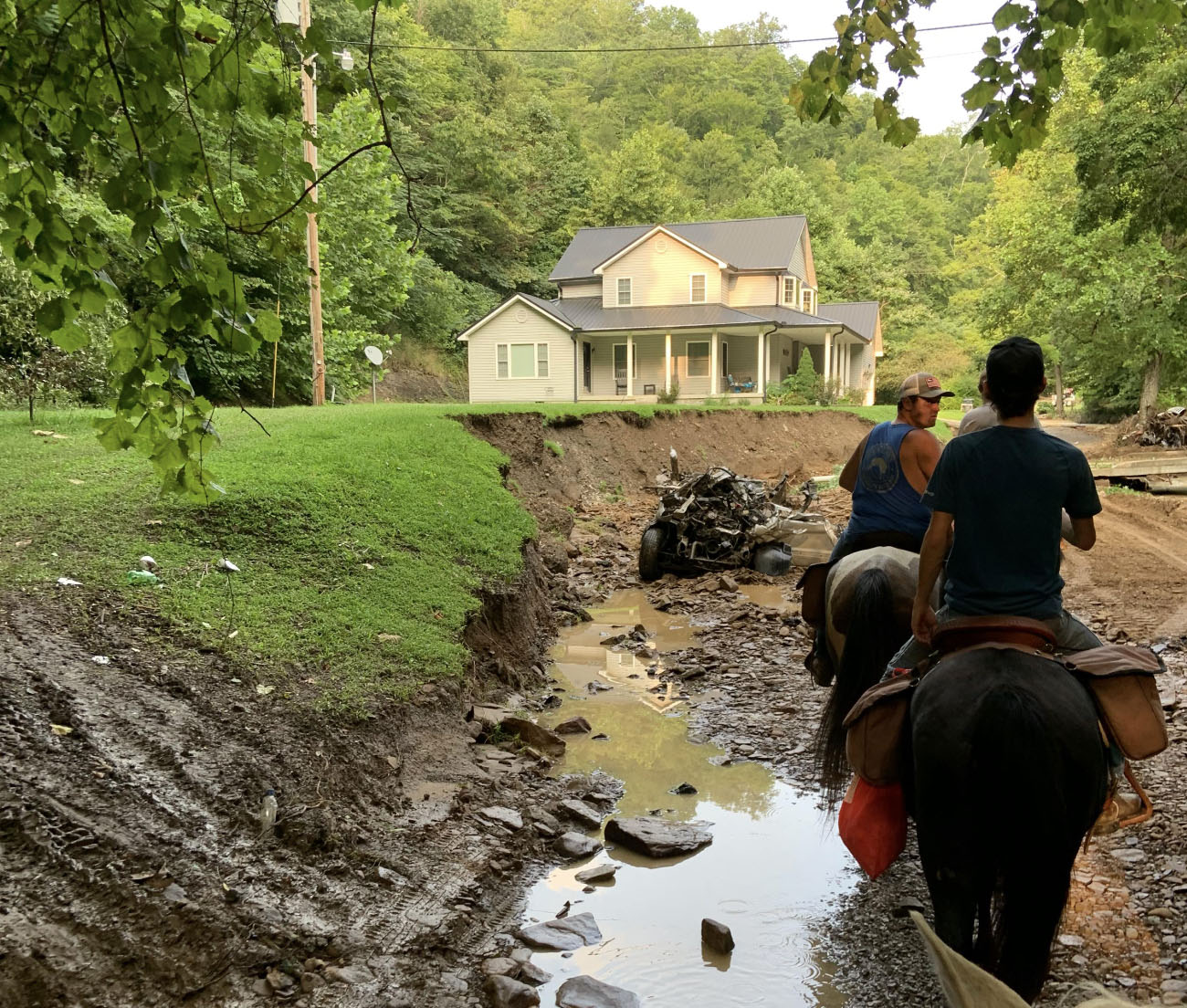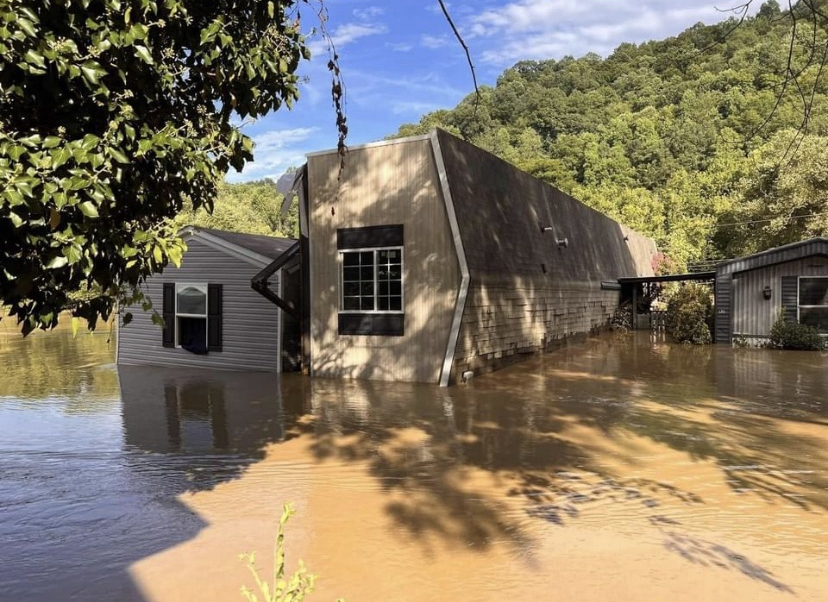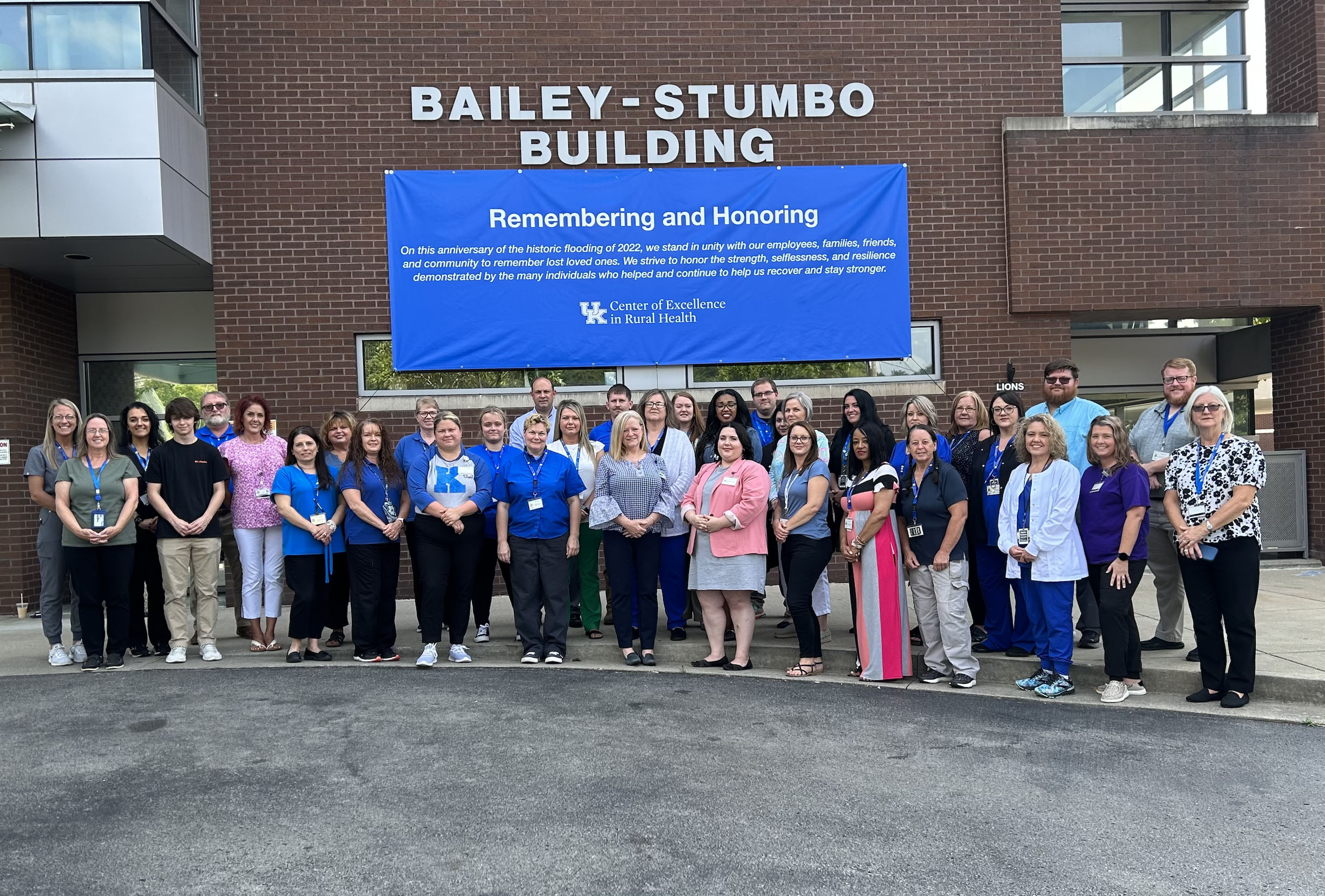The CERH Family: After the Flood (Part 1 of 3)
One Year After Flooding Killed 45 People and Displaced Thousands More, a Community Comes Back Stronger
By Ryan Clark
CHS Communications Director
HAZARD, Ky. — In the early morning hours of July 28, 2022, Lee Hall awoke to a Weather Alert on her cell phone.
It had been raining for some time, and she thought it was probably the loudest storm she had ever heard. The combination of the noise and the alert made her think something very bad was going on outside.
It was something she had to investigate.

“Every few minutes, my phone was giving me another alert, so I finally got up and I looked on Facebook,” Hall said. “It was just heart wrenching.”
What she saw were people all over her town, her county and her region begging for help. Floodwaters were raging due to the amount of rain that had fallen, and across Eastern Kentucky, homes and businesses were being washed away.
“People were on Facebook, desperate trying to find their family,” Hall said. “But the phones are out. The power’s out. I didn't feel like there was anything I could do. But you can’t go back to sleep when you’re seeing something like that, and you know it’s right in your community.”
Hall had been born and raised in the area, had gone to school and come back and served as a physical therapist. She’d worked near her hometown for years and, in just a few months, she was scheduled to start a new job as an Academic Support Services Director at the nearby University of Kentucky Center of Excellence in Rural Health.
In fact, she was supposed to drive in later that day to assist — some of the students had a final exam to take.
“Thankfully, they were all safe,” she said. “But some of the roads had washed out, so some of those students couldn’t even get to the Center.”
Others would not be so lucky. Hall said she knew right away that the storm would cause severe damage, and leave long-lasting scars.
“I had many friends that lost their homes,” she said. “Some people lost their lives. I was lucky; others weren’t.”
In all, 45 people were killed by the high waters, which swept through 14 counties over the course of five days. And as those at the Center of Excellence in Rural Health look back after one year, it is clear their community has gotten stronger, even though there is still much more cleanup to be done across the region.
The CERH Family
The city of Hazard, Ky., population 5,111, sits two hours southeast of Lexington in Perry County, in the eastern part of the state.
The Center of Excellence in Rural Health was established by state legislation in 1990 in Hazard to address health disparities in rural Kentucky and the unique challenges faced by the surrounding communities.
The mission was and still is today to improve the health and wellbeing of rural Kentuckians. For more than three decades, the Center has partnered with communities, providers, students and individuals to provide health professions education, health policy research, health care service, and community engagement toward reaching this mission.
There, physical therapist and medical laboratory scientist majors (and in the past, clinical leadership and management as well) are able to study in a smaller environment, one where those who have been a part of it say strong bonds are formed. They call it ‘The CERH Family.’
And when something threatens that group, it feels similar to when something happens to one’s own family. Just ask the woman in charge what it was like, when one year ago the rains came, and she had to care for her faculty, staff, students — as well as her own relatives.
“There's nothing like going to bed at night and thinking, ‘My goodness, it’s still raining and it’s the hardest rain I think I’ve ever heard in my life,’” said Dr. Fran Feltner, Director of the Center of Excellence in Rural Health. “It was almost like you were dreaming, that it could be that that much rain at one time and you can look out at your yard and at the road and the water just kept coming down.”
At 2 a.m., her grandson called her. He did not have good news.
“My grandson had called at 2 in the morning saying, ‘The water is rising. I can't get out. I don't know what we’re going to do.’ And then the phone went dead,” she said. “It took me two days before we actually got to him.”
She kept hearing reports of the water rising. Then the phones went out. Then the power. Her first priority was that her family was safe, and yet, she was also worried about her co-workers and students at the Center.
“I started a list, and when I would get ahold of one, I’d say, ‘Have you heard from so and so,’ or whatever, and I had to come to the Center to get phone access so I could start calling people,” she said. “Just trying to identify first if everybody was okay was a big challenge. It just became a heavy burden on your shoulders to think in such a short period of time, this can actually happen and then, what do we do?”
Her grandson would lose everything in the flood. But just like everyone else, his first thought was to go out and help others.
At the Center, Feltner and her staff came up with an action plan, and it started with identifying basic needs — shelter, food and medical care — and helping those who needed it.
“We have Kentucky Homeplace here, which is our community health worker division, and the ones who were in counties that were not affected came in the second day, and they were on the ground trying to find who needed what,” she said. Everything from glasses to hearing aids to medication was needed. And, of course, money and supplies were necessary, too.
“People overwhelmingly gave,” Feltner said.

Slowly, power and water came back on in houses. Staff from the Center drove 4-wheelers over creeks and washed-out bridges to deliver food, supplies and medicine. When the 4-wheelers couldn’t make the trip, they rode horses.
“You just saw the devastation and everybody crying,” Feltner said. “It was one of the moments when you thought, ‘What can we do?’”
They did the only thing they could. They continued to come together.
________________________
